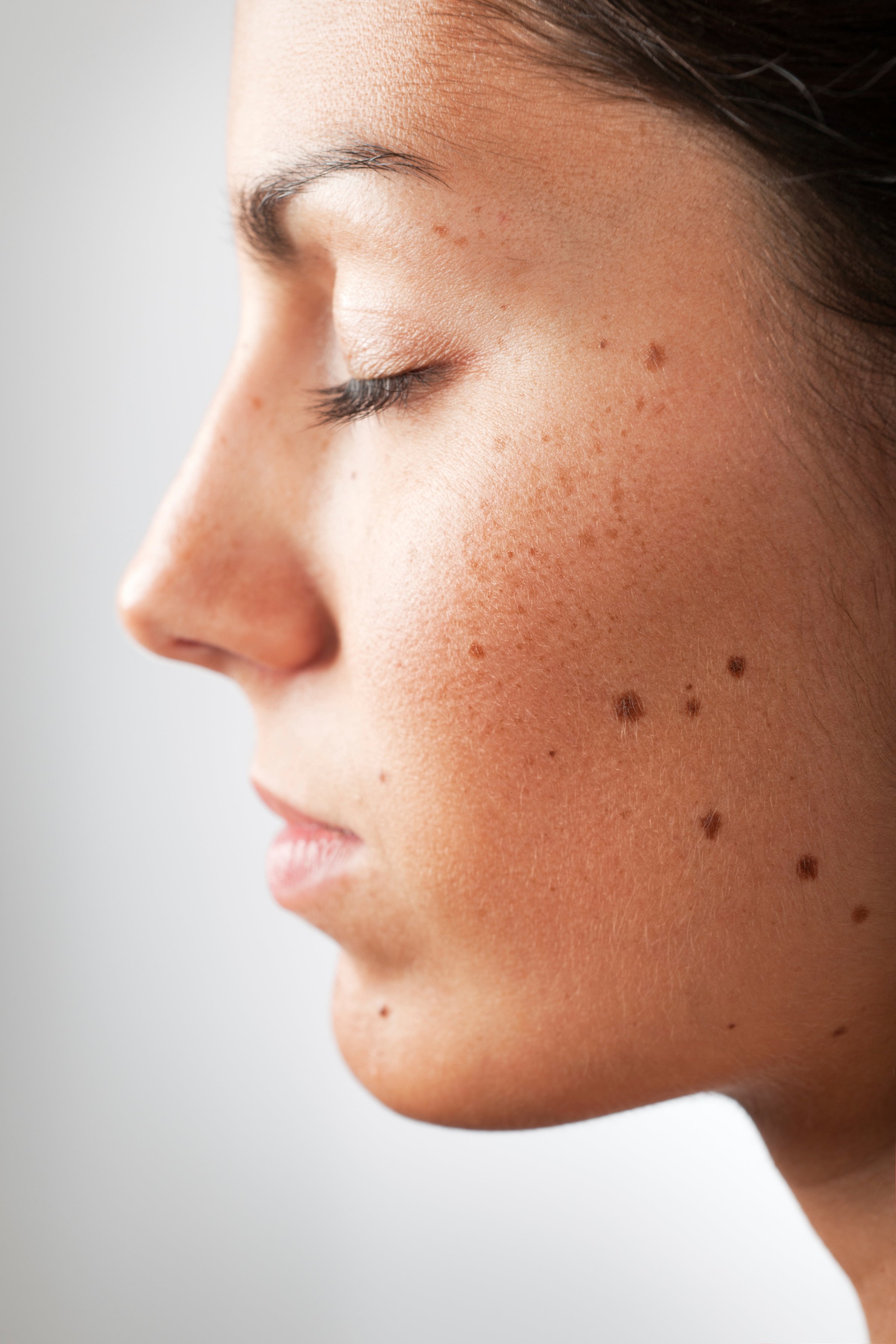
Two new studies suggest that having moles is linked to an increased risk of breast cancer, with one finding women with 15 or more moles were 35% more likely to be diagnosed with breast cancer than women who had none.
Before you frantically start counting all the moles on your body, know that these studies are a couple of the first to ever make this connection, and these findings are not causal. The first study used the Nurses’ Health Study a study of over 74,500 female nurses and the second study looked at E3N Teachers’ Study Cohort which includes over 89,900 women. In the first study, the researchers asked the Nurse’s Health Study participants to report the number of moles larger than 3mm on their left arm (left-side mole counts are usually used because the assumption is that many people drive to work and get incidental sun exposure from the drivers’ side window). They found that women with 15 or more had a 35% higher risk of breast cancer, with an absolute risk of 11.4% for women with over 15 moles and 8.48% for women with no moles.
In the second study, the researchers asked the participants to report if they had no, a few, many, or very many moles, and found that women with very many moles had a 13% higher risk of breast cancer than women with no moles.
The researchers did not find that moles cause—or even predict—breast cancer. But they think they link may be genetic or hormonal. The author of the second study, Marina Kvaskoff of Brigham & Women’s Hospital and Harvard Medical School, says it’s possible it’s a hormonal issue, since it is known that moles get darker during pregnancy and skin pigment is responsive to hormones. There could also be a genetic component, since when Kvaskoff and her colleagues adjusted for history of breast disease, they found the association decreased. But significantly more research is needed if any solid connection is to be made.
“It should really not panic women who have a lot of [moles] since these are very new findings. The association is very modest,” says Kvaskoff. “We are noticing this link, and we hope that it will generate more knowledge. If it is confirmed with other research, it could become a risk marker for breast cancer or other hormonal conditions, but it’s too soon to be associated with a breast cancer diagnosis. We hope this will generate more research.”
Dr. Freya Schnabel of NYU Perlmutter Cancer Center says the modest connection doesn’t tell us much at all. “From the perspective of why there’s an association, there is really not much to say,” she says. “This is one of those situations where you have statistical connection, but there is no sense of underlying mechanism. There’s no clear causality and nothing to explain why. As a result, I don’t have a sense how this would change practice.” Dr. Schnabel acknowledges that the researchers tried to look at hormonal levels, but to do that properly, they would need to really look at all these levels at various points throughout a person’s life, like before during and after menopause.
Dr. Schnabel says women who do have a lot of skin moles are better off paying attention to skin cancer and skin checks.
“Breast cancer is a common disease and we are always looking for ways to find out who is more at risk,” says Dr. Schnabel. “We know some strong risk factors like family history that have a much greater risk than this. Paying attention to these is a more effective thing to do for your health than paying attention to a link that doesn’t have much explanation behind it.”
More Must-Reads from TIME
- Donald Trump Is TIME's 2024 Person of the Year
- Why We Chose Trump as Person of the Year
- Is Intermittent Fasting Good or Bad for You?
- The 100 Must-Read Books of 2024
- The 20 Best Christmas TV Episodes
- Column: If Optimism Feels Ridiculous Now, Try Hope
- The Future of Climate Action Is Trade Policy
- Merle Bombardieri Is Helping People Make the Baby Decision
Contact us at letters@time.com